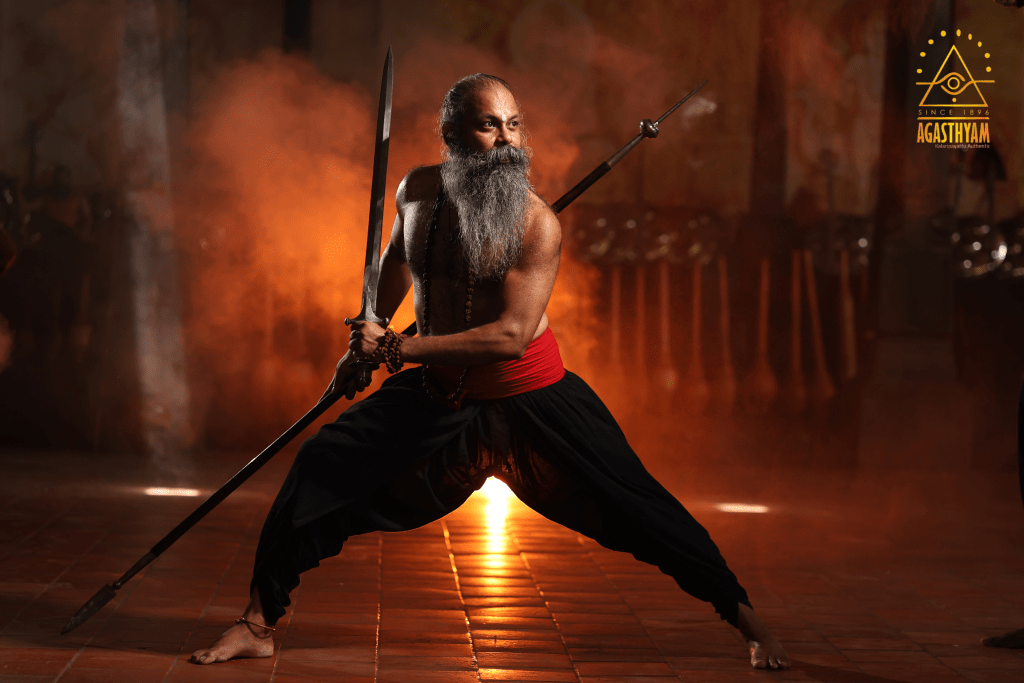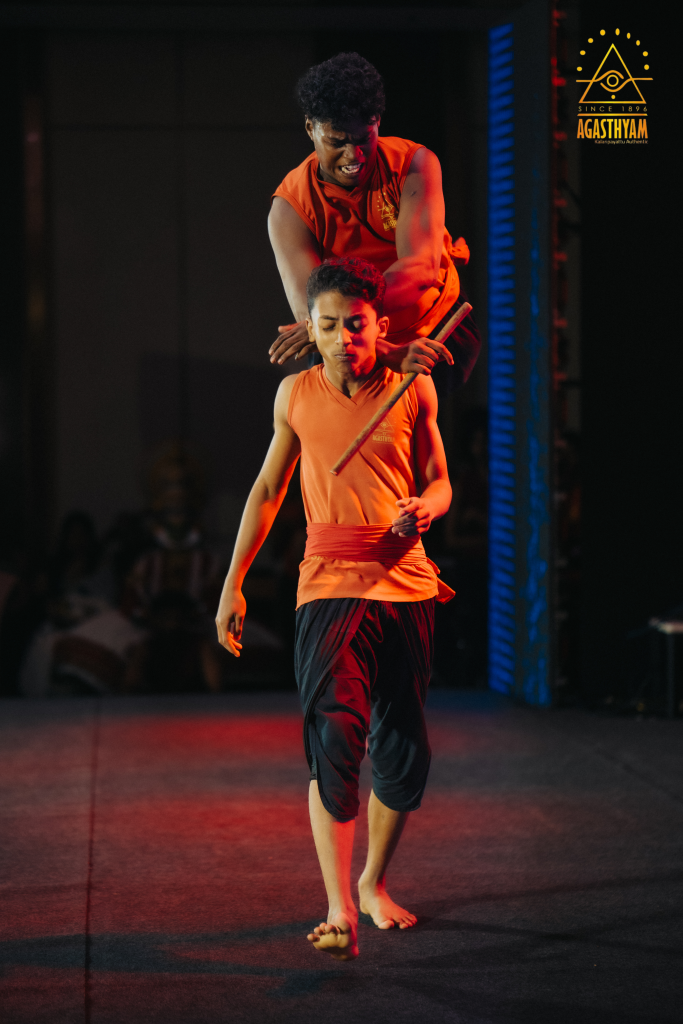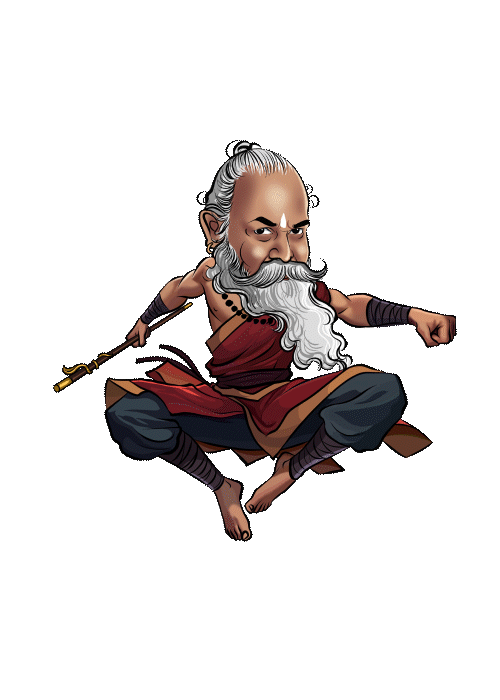
When we think of martial arts, our minds often drift to the elegance of Kung Fu from China or the discipline of Karate from Japan. These arts have gained global popularity through films, schools, and cultural exchanges. Yet, long before these systems were codified, the ancient martial arts of India had already taken shape, evolving through centuries of warfare, meditation, and spiritual practice. Among these traditions, Kalaripayattu the martial art of Kerala stands tall as one of the oldest, most intricate, and most holistic martial systems in the world. Its origins trace back thousands of years, blending combat, healing, spirituality, and philosophy in ways rarely seen in martial arts today.
The Lineage of Indian Martial Arts
The story of Indian martial arts begins in the culturally rich southern regions of India, particularly in Kerala, a land deeply connected to warrior traditions. Ancient temple sculptures, palm-leaf manuscripts, and references in classical literature speak of a time when warriors trained in complex combat systems that required not only strength but also meditation, breath control, and profound discipline.
These martial systems were holistic. They taught warriors to master their bodies, sharpen their minds, and cultivate inner equilibrium. Combat was not seen merely as a skill of destruction, but as a path toward self-realization and responsibility.
Over centuries, various Indian martial arts styles emerged across the subcontinent, each influenced by local culture and warfare techniques.
- In Tamil Nadu, Silambam flourished with its fast, precise staff-fighting techniques.
- In Manipur, the martial art Thang-Ta blended sword and spear movements with dance-like footwork.
- In Punjab, Gatka emerged as a spiritual and combat practice rooted in Sikh warrior traditions.
Despite this diversity, Kalaripayattu is often regarded as the “mother of all martial arts.” Many historians believe its principles traveled beyond India through Buddhist monks, influencing martial forms across East and Southeast Asia. These cultural exchanges helped lay the foundation for arts like Shaolin Kung Fu, making Kalaripayattu not just an Indian treasure but a global root of martial traditions.

The Origins of Kalaripayattu
The term Kalaripayattu comes from two words : Kalari meaning “training ground” or “battlefield,” and Payattu meaning “fight” or “practice.” This martial art, believed to be over 3,000 years old, is deeply woven into Kerala’s history, mythology, and cultural evolution.
Ancient legends attribute its creation to Sage Parashurama, the warrior-saint who is believed to have reclaimed the land of Kerala from the sea. He is said to have established Kalaripayattu to train warriors who would protect the land and uphold dharma.
What makes Kalaripayattu unique is its holistic nature.
It combines:
- Striking techniques
- Kicks and locks
- Grappling and weapon systems
- Ayurveda-based healing therapies
- Flexible, yoga-inspired postures
- Breathwork and energy-channel practices (Prana-Vayu)
Training takes place in the Kalari, a sacred sunken pit built according to ancient science and aligned with energy principles. Students begin by learning rituals, stepping patterns, and body conditioning exercises that enhance flexibility, speed, and strength. Respect, discipline, and humility are considered as important as combat mastery.
Kalaripayattu includes several styles, such as:
- Northern style (Vadakkan Sampradayam) known for fluid movements, weapon mastery, and acrobatic jumps.
- Southern style (Thekkan Sampradayam) focuses on powerful strikes, locks, and hand-to-hand techniques.
- Central Kerala style (Madhya Sampradayam) blends elements of both traditions.
The depth and breadth of Kalaripayattu make it one of the most complete martial arts systems in the world.

Global Influence and Revival
Kalaripayattu’s impact extended far beyond the boundaries of India. When Indian Buddhist monks traveled to China millennia ago, they carried with them the physical practices, meditative techniques, and combat principles from their homeland. These teachings later evolved in Chinese temples most notably in the Shaolin Monastery, which became the cradle of several East Asian martial arts.
In the modern era, Kalaripayattu has continued to influence global culture.
- Choreographers blend its movements into contemporary dance and theatre.
- Filmmakers, especially in Bollywood, Tamil cinema, and Hollywood, borrow its dramatic aesthetics and weapon sequences.
- Athletes and fitness enthusiasts adopt its training routines to improve flexibility, stamina, and functional strength.
Kalaripayattu showcases a unique combination of grace, rhythm, and explosive power, making it visually captivating and physically transformative.
In recent decades, the art has experienced a thoughtful and passionate revival. Traditional Kalaris in Kerala have opened their doors to people from around the world. Schools now teach Kalaripayattu as a tool for:
- wellness,
- physical conditioning,
- mental balance,
- artistic expression,
- and cultural preservation.
Government bodies and cultural organizations also promote the art through festivals, workshops, and demonstrations, ensuring that this ancient heritage continues to thrive.
Kalaripayattu stands today as a symbol of India’s profound martial heritage a tradition rooted in discipline, spirituality, and warrior wisdom. Its evolution from ancient battlefields to modern fitness centers, dance studios, and global platforms shows that the wisdom of the past continues to inspire the present.
More than a martial art, Kalaripayattu is a philosophy, a way of life, and a living testament to India’s timeless pursuit of harmony between body, mind, and spirit.




